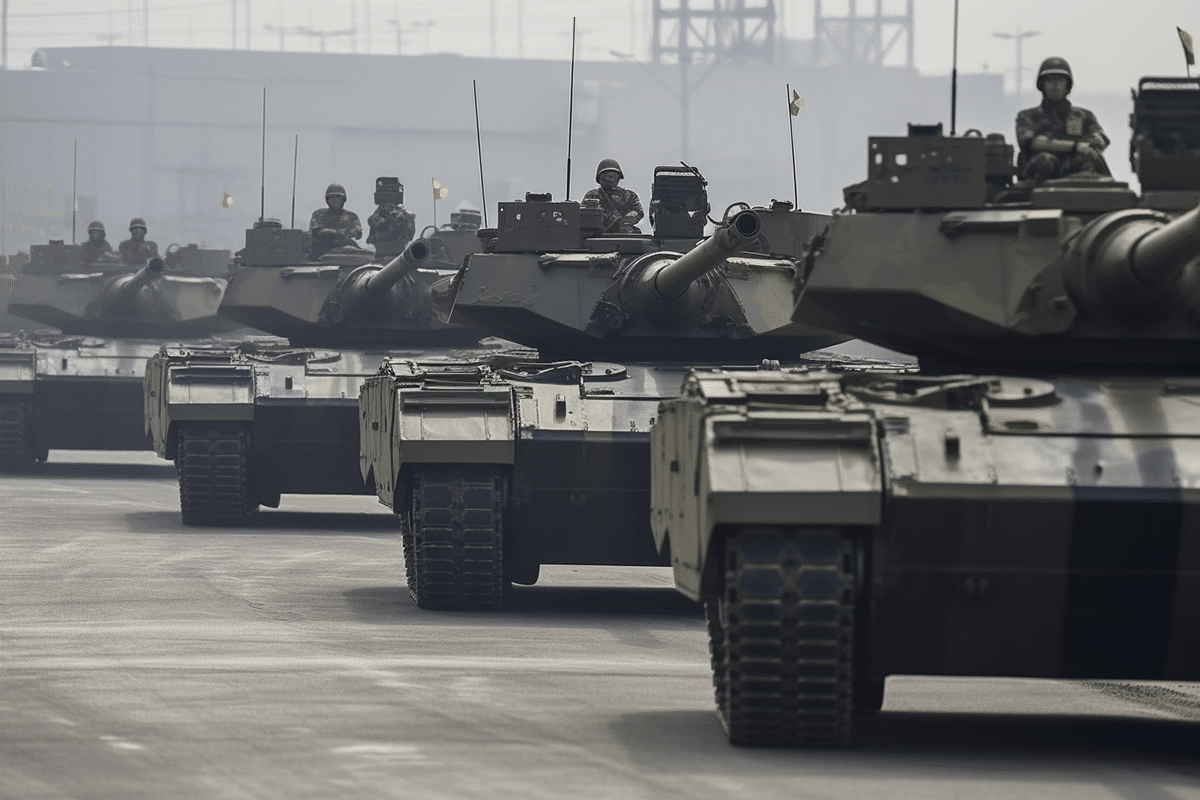Japan is pushing for a record 8.5 trillion yen ($59 billion) defense budget for the next fiscal year, marking a strategic shift in its approach to national security. This move comes as a response to escalating threats from China, particularly around Japan’s southwestern islands. By boosting its military spending, Japan aims to fortify its defensive capabilities and enhance its deterrence posture against regional aggressors.
This budget request is part of Japan’s broader five-year military buildup plan, which is designed to double the country’s annual defense spending by 2027. The goal is to allocate 43 trillion yen ($297 billion) over this period, making Japan the world’s third-largest military spender after the United States and China. Such a significant increase underscores Japan’s commitment to safeguarding its territorial integrity and maintaining regional stability.
Focus on Unmanned Weapons and AI Technology
One of the key priorities in Japan’s defense strategy is the development and deployment of unmanned weapons systems and artificial intelligence. With a shrinking population and a declining number of servicemembers, Japan is increasingly relying on advanced technology to fill the gaps in its defense capabilities. Unmanned systems, such as combat drones, are seen as “game changers” that can undertake long missions and minimize human losses.
The proposed budget includes 103 billion yen ($710 million) for drone development and acquisition, which highlights the emphasis on leveraging technology to enhance surveillance and combat operations. Additionally, Japan plans to invest in artificial intelligence systems to optimize military efficiency. These technological advancements are expected to help Japan maintain a robust defense posture despite its demographic challenges.
Strengthening Long-Range Strike Capabilities
Another major focus of the budget is enhancing Japan’s long-range strike capabilities. The defense ministry has earmarked 970 billion yen ($6.7 billion) for the development and procurement of long-range missiles and the equipment needed for their launch. This includes systems that can be deployed from Aegis-class destroyers, a crucial element in Japan’s strategy to counter potential threats from neighboring countries.
A significant portion of this funding is also dedicated to building a satellite constellation that will improve Japan’s ability to detect missile-related activities. This initiative is in response to the advancements in hypersonic missile technology by North Korea, China, and Russia, which present a growing challenge to traditional missile defense systems. By investing in these capabilities, Japan aims to bolster its defensive and retaliatory options.
Challenges in Troop Recruitment and Retention
While Japan is focused on advancing its military technology, it faces ongoing challenges in recruiting and retaining personnel for its Self-Defense Forces (SDF). The country’s declining birthrate and competition from private sector jobs have made military recruitment increasingly difficult. Last year, Japan only met half of its recruitment target, the lowest in the SDF’s 70-year history. Moreover, mid-career departures have reached their highest level in three decades.
To address these issues, Japan’s defense ministry is considering various reforms to make military service more attractive. These include improving salaries, creating a better working environment, offering more training opportunities, and providing support for working mothers. Such measures are aimed at making a career in the SDF more appealing to young people and women, helping to sustain the country’s defense capabilities.
Implementing AI and Automation to Enhance Efficiency
In addition to focusing on unmanned systems, Japan is also looking to implement AI and automation to improve operational efficiency. The defense ministry is requesting 18 billion yen ($124 million) to introduce an AI surveillance system at 40 SDF bases across the country. This initiative aims to free up approximately 1,000 service personnel by automating surveillance tasks, thereby reducing the reliance on human resources.
The ministry is also planning to invest 4.3 billion yen ($29.7 million) in automated supply storage facilities, set to be operational by 2027 in Okinawa. These facilities will streamline logistics and support operations, ensuring that Japan’s defense forces are well-equipped and ready to respond to any threats. By embracing technology and automation, Japan is positioning itself to maintain a strong defense posture while addressing the challenges of a shrinking population and workforce.




